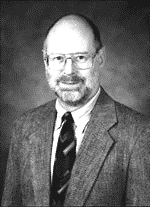Department of Physics and Astronomy: Publications and Other Research
Document Type
Article
Date of this Version
December 1968
Abstract
The electrical conductivity and chlorine ion diffusion in KC1 and KCl:SrC12 single crystals have been analyzed by least-squares methods, using as a model a perfect crystal perturbed by five defects: isolated anion vacancies, isolated cation vacancies, divalent cation impurities, divalent cation-impurity-cation-vacancy complexes, and vacancy pairs. The transport equations were derived from this five-defect model using a simple theory for noninteracting particles, except for the nearest-neighbor binding to form complexes and vacancy pairs, and using the same theory including long-range Coulomb interactions between the isolated defects. This latter theory yielded the better description of the experimental results. However, the analyses showed that significant nonrandom deviations exist between theory and experiment. These deviations exist in both the intrinsic and extrinsic regions of conductivity. The failure of existing concepts for these transport properties is discussed in terms of possible additional mechanisms, i.e., electrons, cationic Frenkel defects, or trivacancies, and in terms of more complete theoretical treatment.



Comments
Published by American Physical Society. Phys. Rev. 176, 1036 (1968). http://pra.aps.org. Copyright © 1968 American Physical Society. Permission to use.